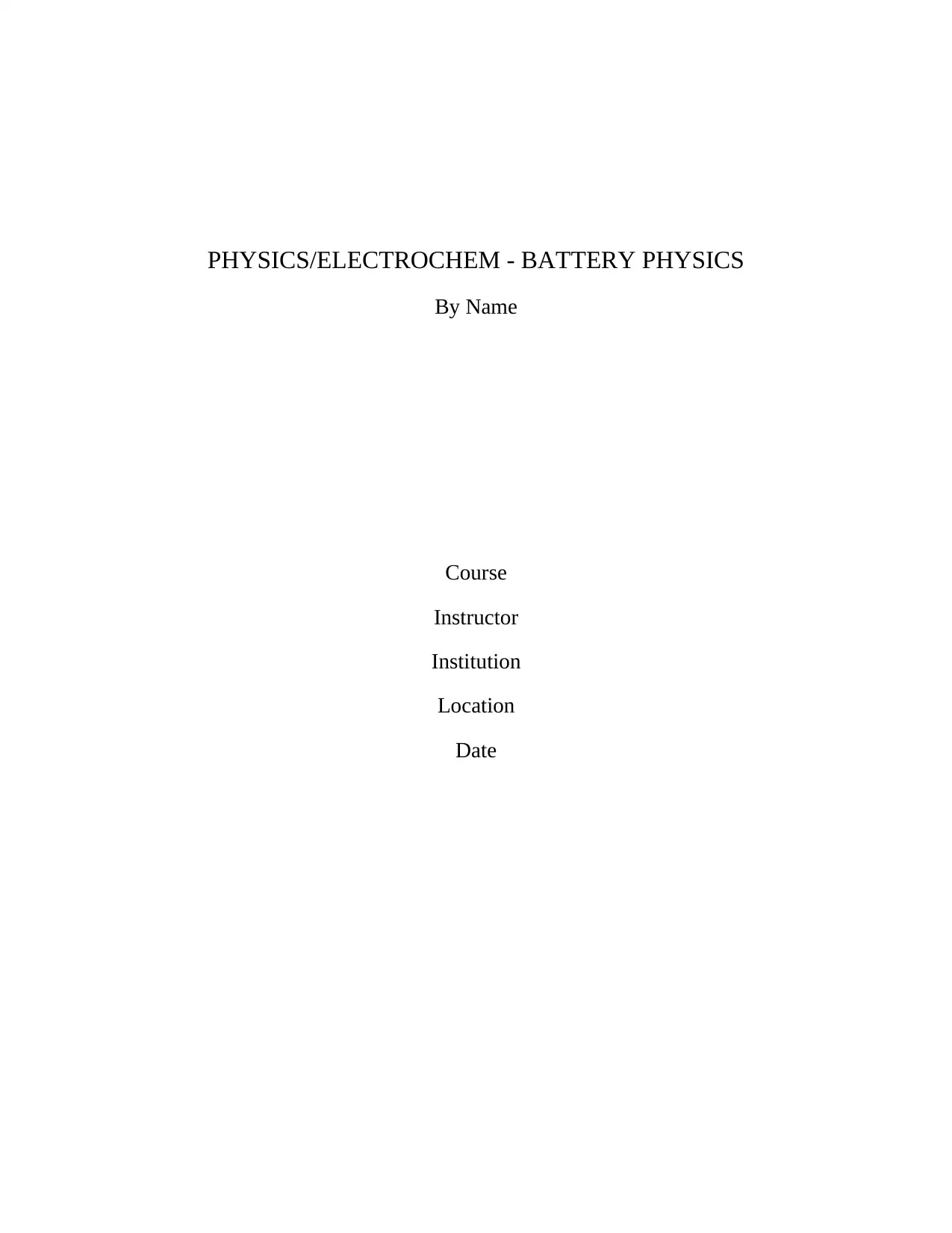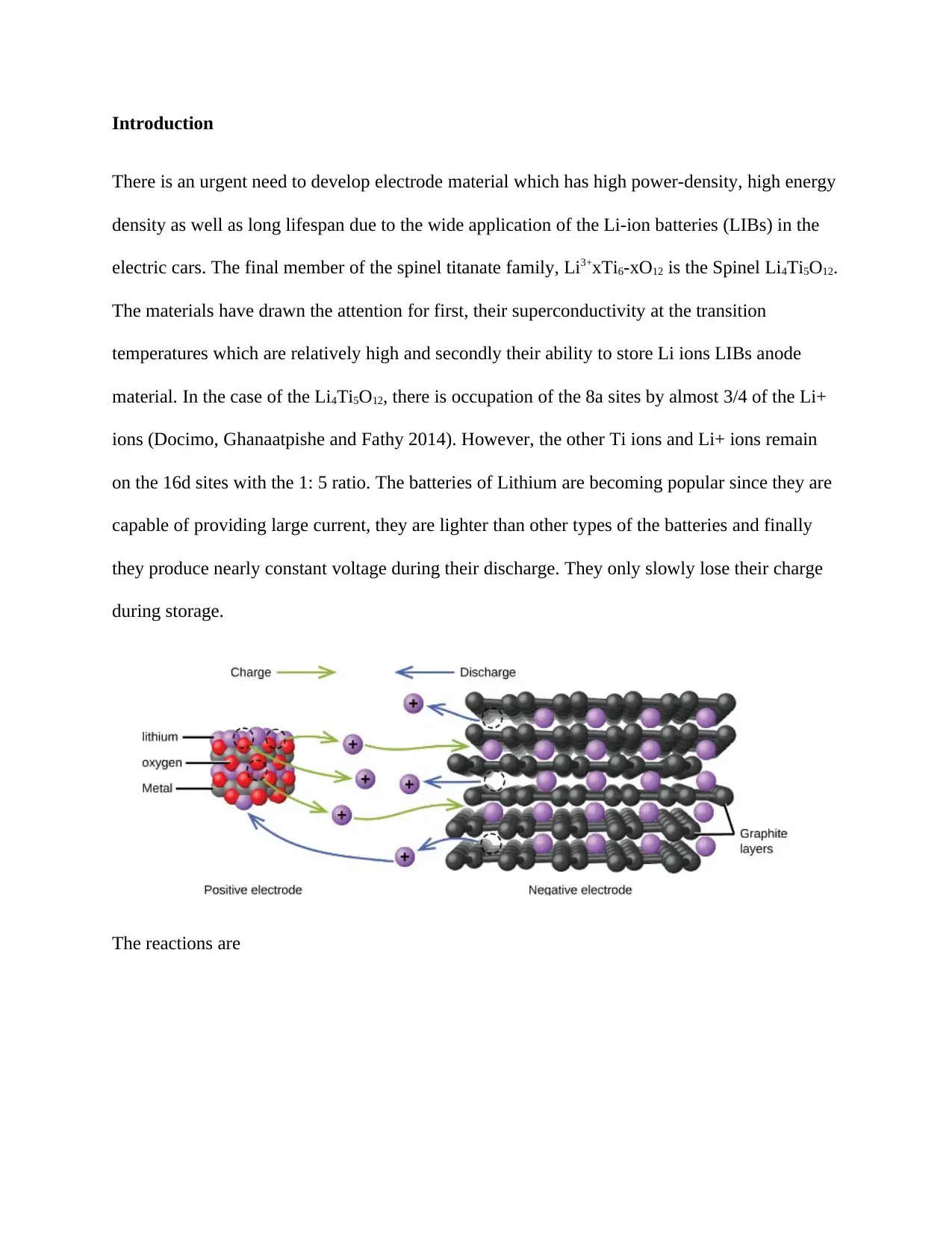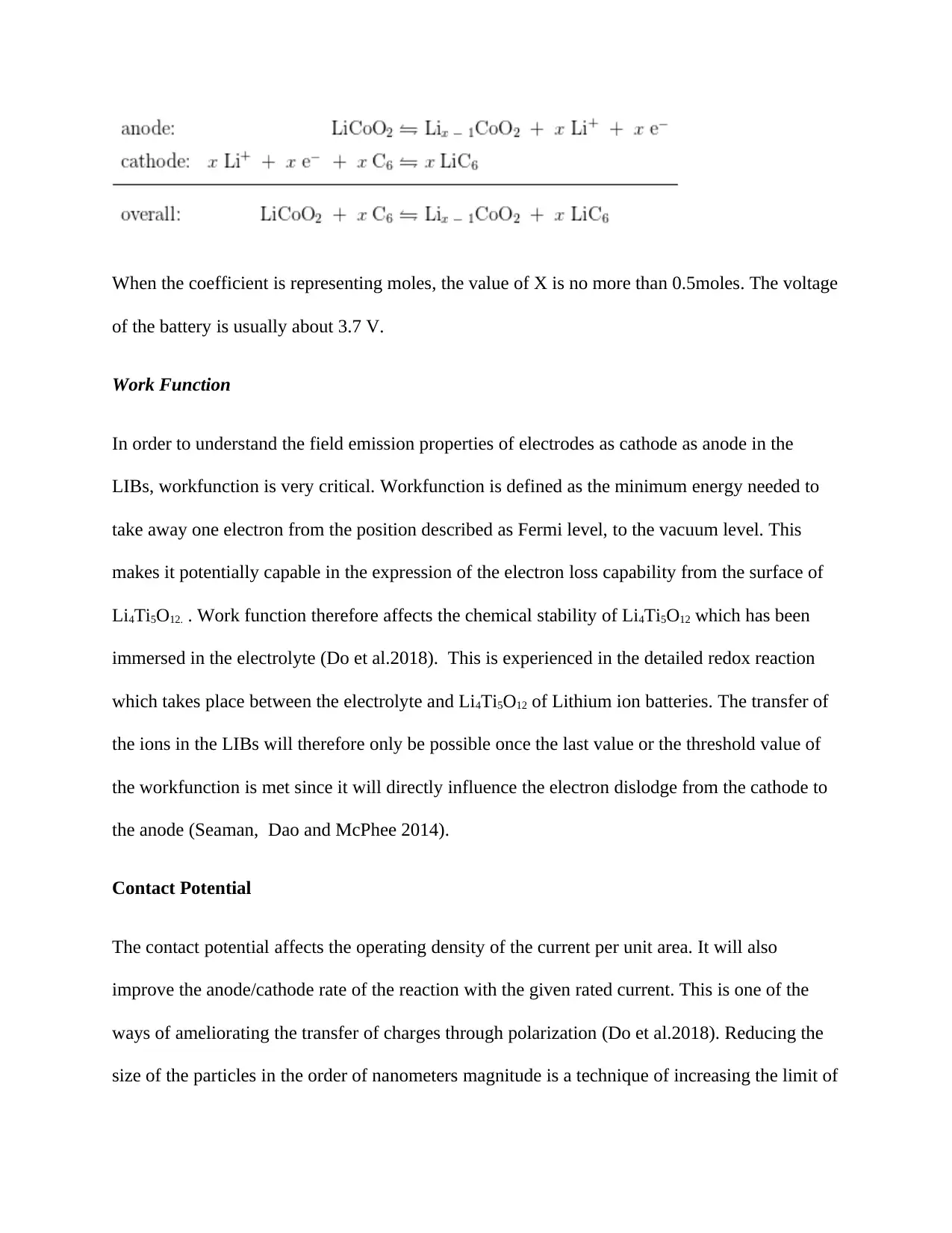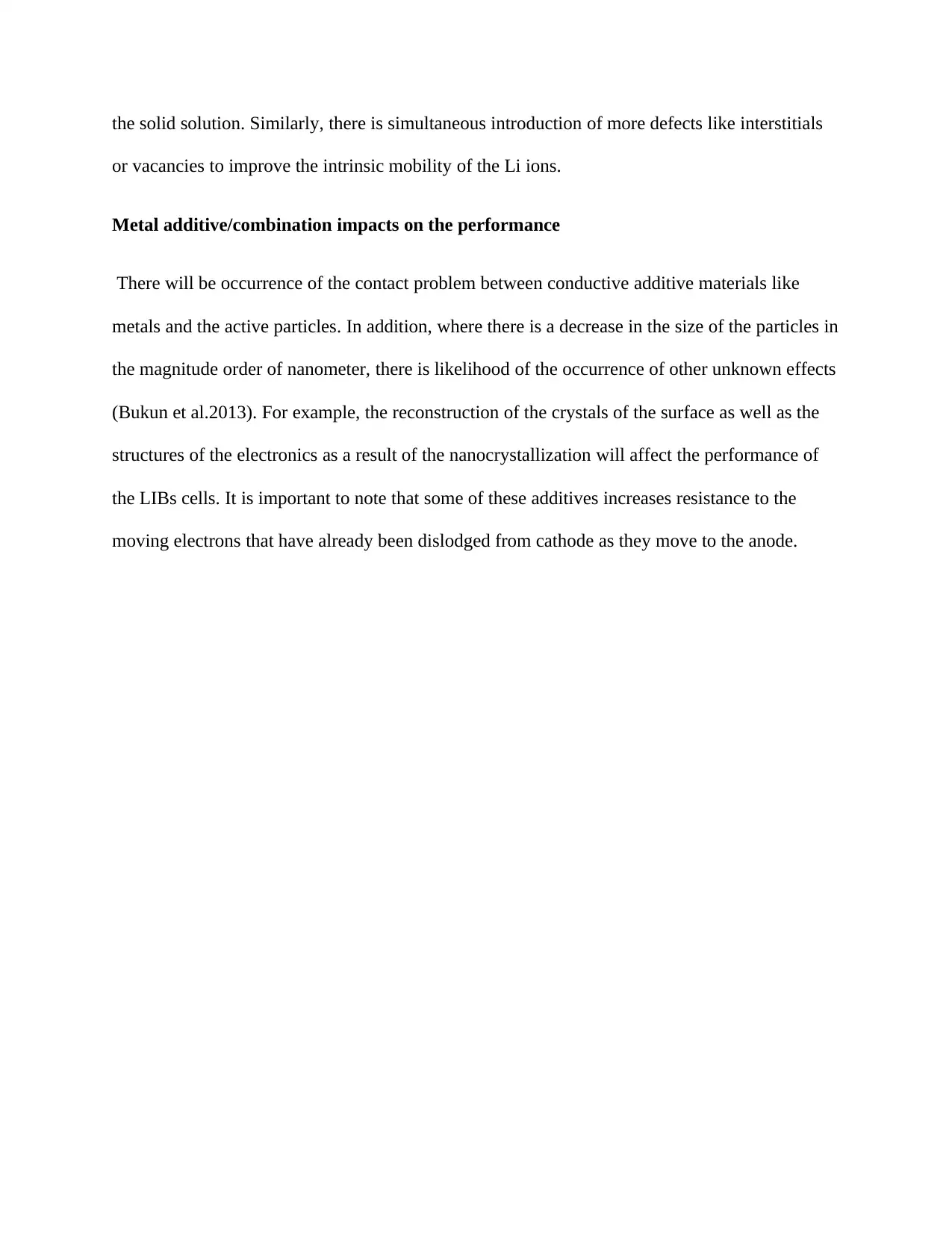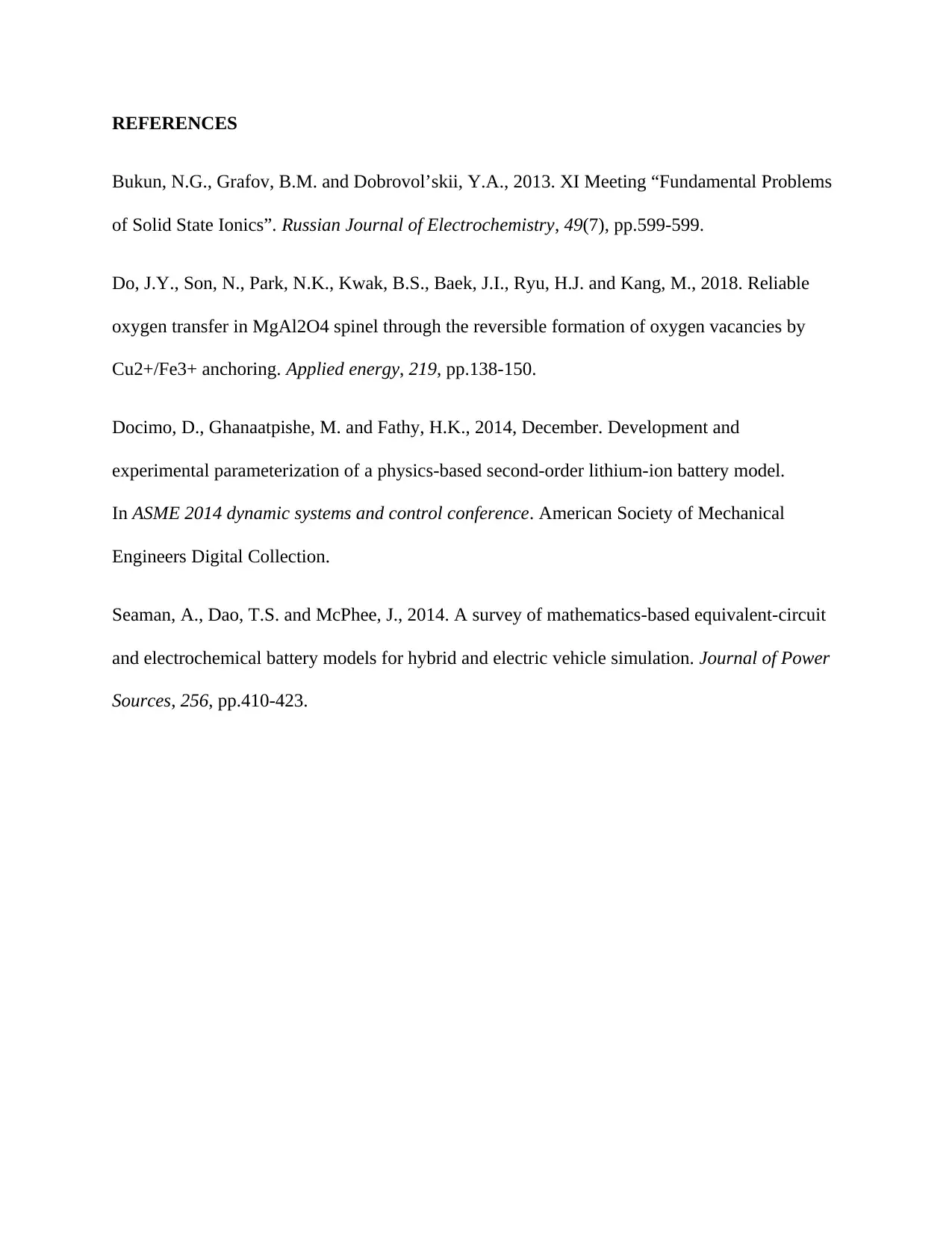Physics Report: Li4Ti5O12 Battery Electrode Material Analysis
VerifiedAdded on 2022/11/25
|5
|792
|229
Report
AI Summary
This report delves into the physics of lithium-ion batteries, with a specific focus on the spinel titanate family, particularly Li4Ti5O12, as an electrode material. It explores the significance of high power-density, high energy density, and long lifespan in Li-ion batteries, especially for electric vehicles. The report investigates the role of work function and contact potential in influencing the performance of Li4Ti5O12, including its chemical stability in electrolytes and its impact on electron transfer. It also examines the effects of metal additives and particle size reduction on battery performance, discussing the potential for crystal reconstruction and the introduction of defects. The report references key studies to support its analysis of Li-ion battery physics.
1 out of 5
